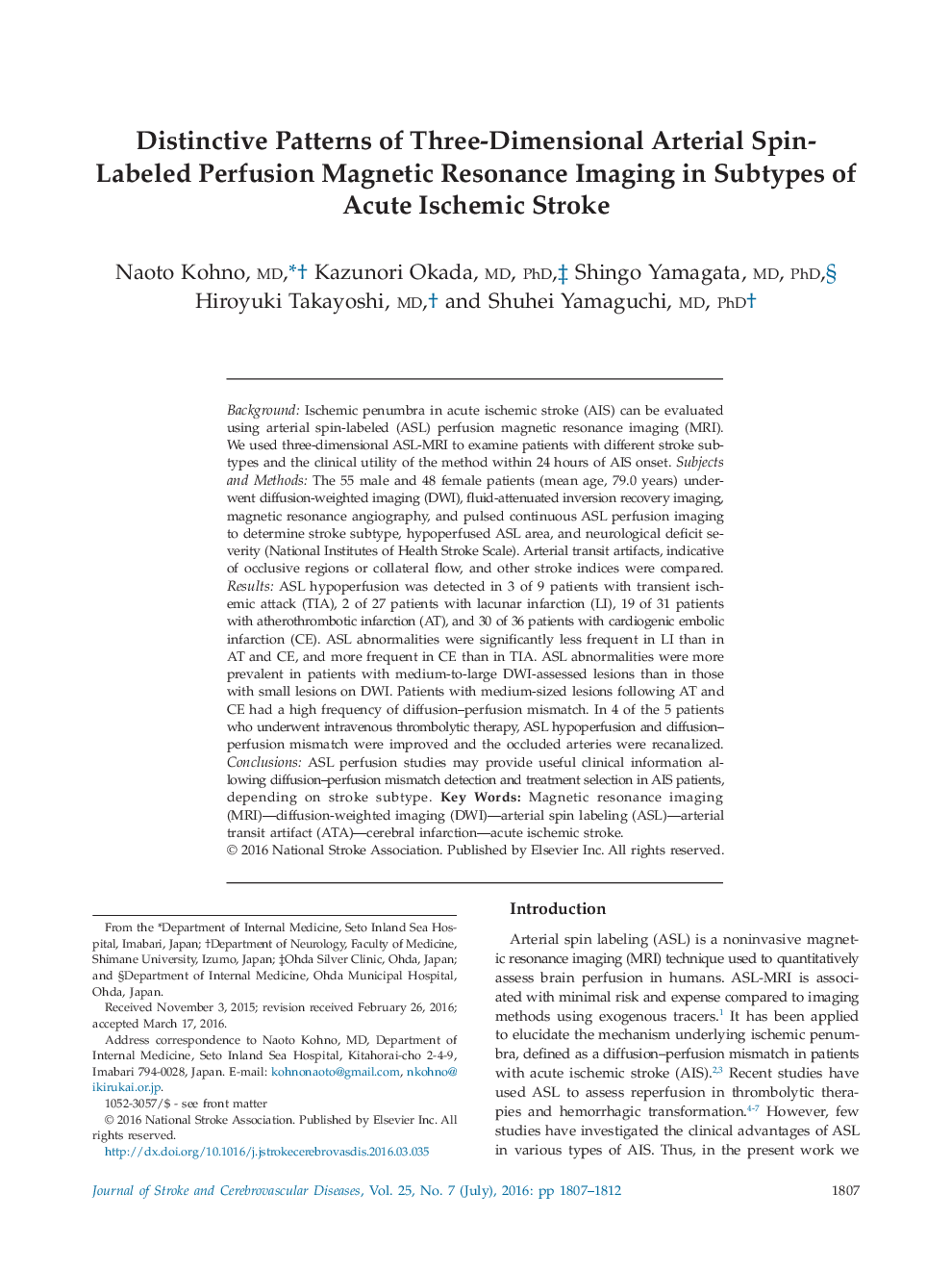| Article ID | Journal | Published Year | Pages | File Type |
|---|---|---|---|---|
| 5874924 | Journal of Stroke and Cerebrovascular Diseases | 2016 | 6 Pages |
BackgroundIschemic penumbra in acute ischemic stroke (AIS) can be evaluated using arterial spin-labeled (ASL) perfusion magnetic resonance imaging (MRI). We used three-dimensional ASL-MRI to examine patients with different stroke subtypes and the clinical utility of the method within 24 hours of AIS onset.Subjects and MethodsThe 55 male and 48 female patients (mean age, 79.0 years) underwent diffusion-weighted imaging (DWI), fluid-attenuated inversion recovery imaging, magnetic resonance angiography, and pulsed continuous ASL perfusion imaging to determine stroke subtype, hypoperfused ASL area, and neurological deficit severity (National Institutes of Health Stroke Scale). Arterial transit artifacts, indicative of occlusive regions or collateral flow, and other stroke indices were compared.ResultsASL hypoperfusion was detected in 3 of 9 patients with transient ischemic attack (TIA), 2 of 27 patients with lacunar infarction (LI), 19 of 31 patients with atherothrombotic infarction (AT), and 30 of 36 patients with cardiogenic embolic infarction (CE). ASL abnormalities were significantly less frequent in LI than in AT and CE, and more frequent in CE than in TIA. ASL abnormalities were more prevalent in patients with medium-to-large DWI-assessed lesions than in those with small lesions on DWI. Patients with medium-sized lesions following AT and CE had a high frequency of diffusion-perfusion mismatch. In 4 of the 5 patients who underwent intravenous thrombolytic therapy, ASL hypoperfusion and diffusion-perfusion mismatch were improved and the occluded arteries were recanalized.ConclusionsASL perfusion studies may provide useful clinical information allowing diffusion-perfusion mismatch detection and treatment selection in AIS patients, depending on stroke subtype.
